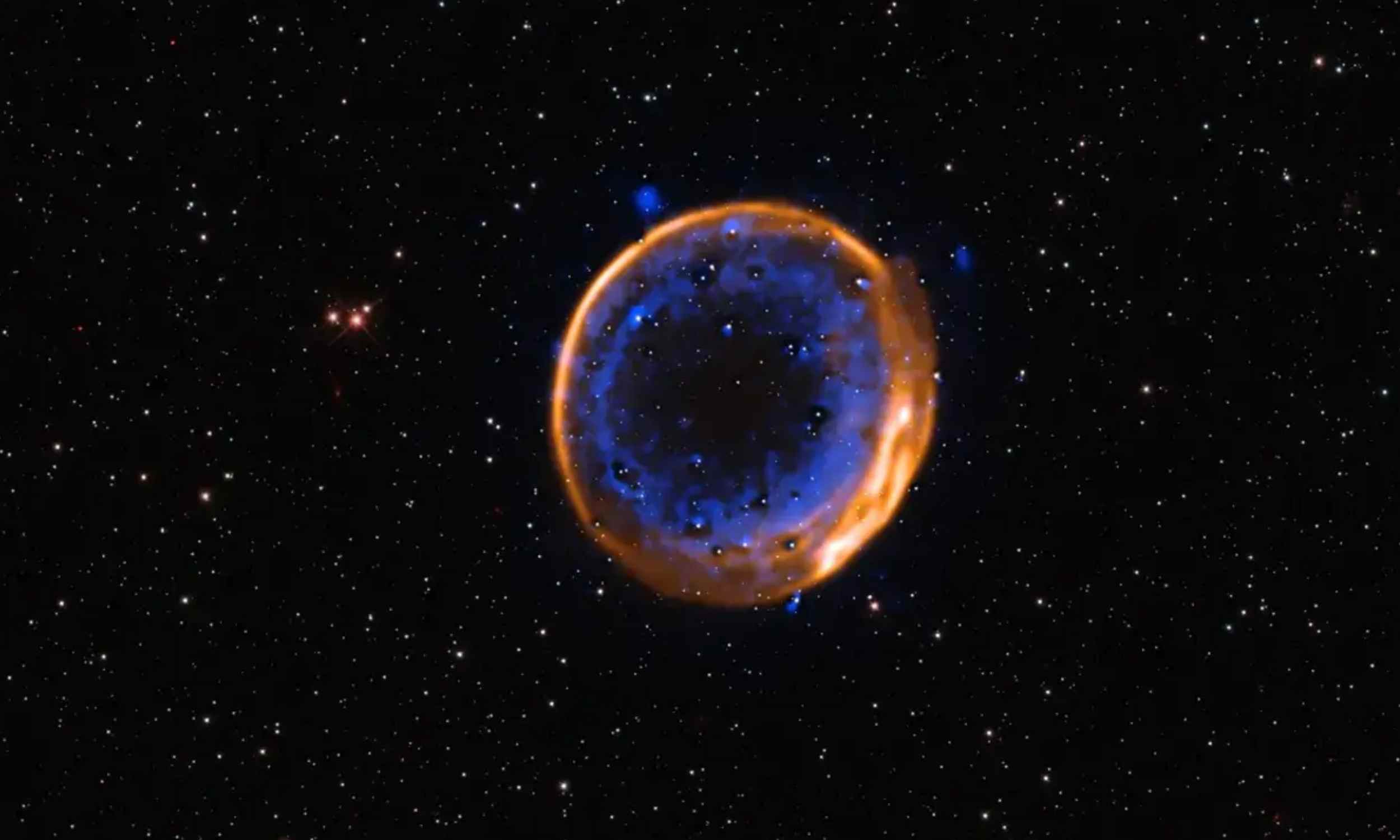A star died in a way that astronomers had long suspected but never seen so clearly. Its remains show two separate layers of debris, the calling card of a double explosion.
The object sits in the Large Magellanic Cloud, a nearby dwarf galaxy about…

A star died in a way that astronomers had long suspected but never seen so clearly. Its remains show two separate layers of debris, the calling card of a double explosion.
The object sits in the Large Magellanic Cloud, a nearby dwarf galaxy about…